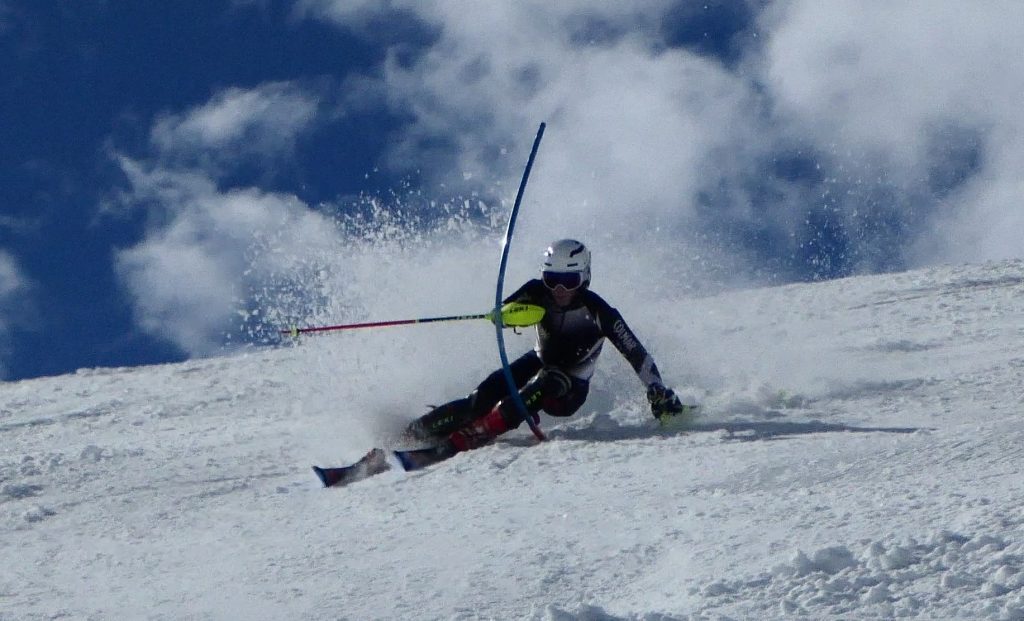Tristan, Richard
- Snowplough
- Skating
- Combining Snowplough with Dynamics
- Basic Dynamics (parallel)
Snowplough (Centre of Mass)
The braking snowplough requires the adductors of both legs to be relaxed to open up the hip joints.
First turns are made by simply tightening the adductors in one leg only – to turn left it’s in the right leg. With narrower ploughs then the adductors of both legs should be engaged.
Weight is always maintained on whatever ski is furthest down the mountain so that it can act as an effective brake. Changes of pressure on any ski are due to geometrical effects between the skis and the slope angle – not “transfer of weight”.
Starting a turn when traversing the slope in a plough requires only a slight movement of the Centre of Mass toward the downhill ski. This ski then slowly feeds the skier into a controlled turn. When facing directly down the fall line, the body being held constantly toward the inside ski in the turn, ensures the outside ski can takeover the completion of the turn. The pressure changes on the skis are automatic – just move the Centre of Mass toward the centre of the intended turn and keep it there from start to finish.
Skating/Adductors
Skiing is just disguised skating. The main difference is the skis are wide and have two edges. When diverging the skis outwards at the tips into a skating stance the skis want to flatten on the snow and the stiff shaft of the ski boots will pull the knees outward. The adductor muscles need to be engaged to hold the skis on their inside edges. This is a pattern of muscle use – the adductors of both legs contracting – that should be maintained when skiing parallel. This is partly dependent on the skier’s morphology. If the femurs are naturally directed inwards less adductor use might be appropriate but if slightly bow legged there may be a need to consciously work the adductors.
Only when snowplough braking should the adductors be released to widen the spreading of the tails of the skis from the hip joints.
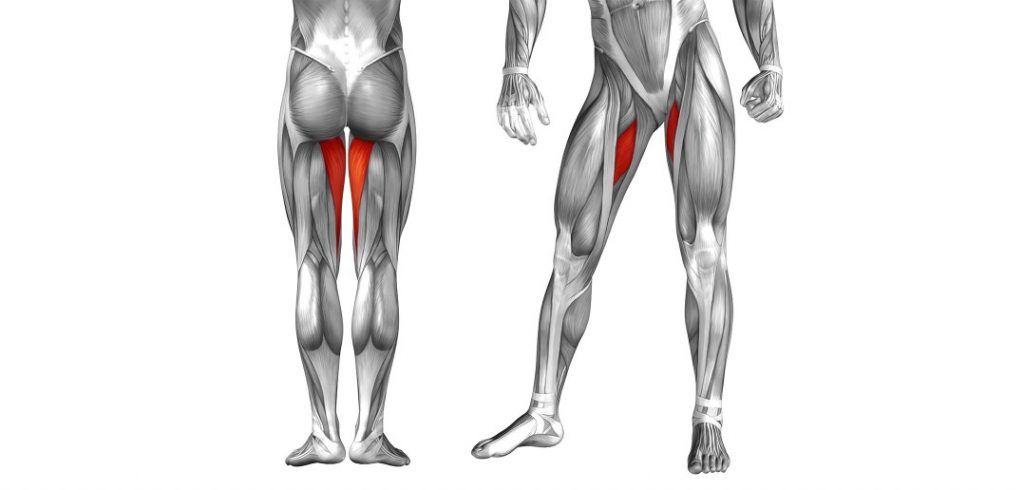
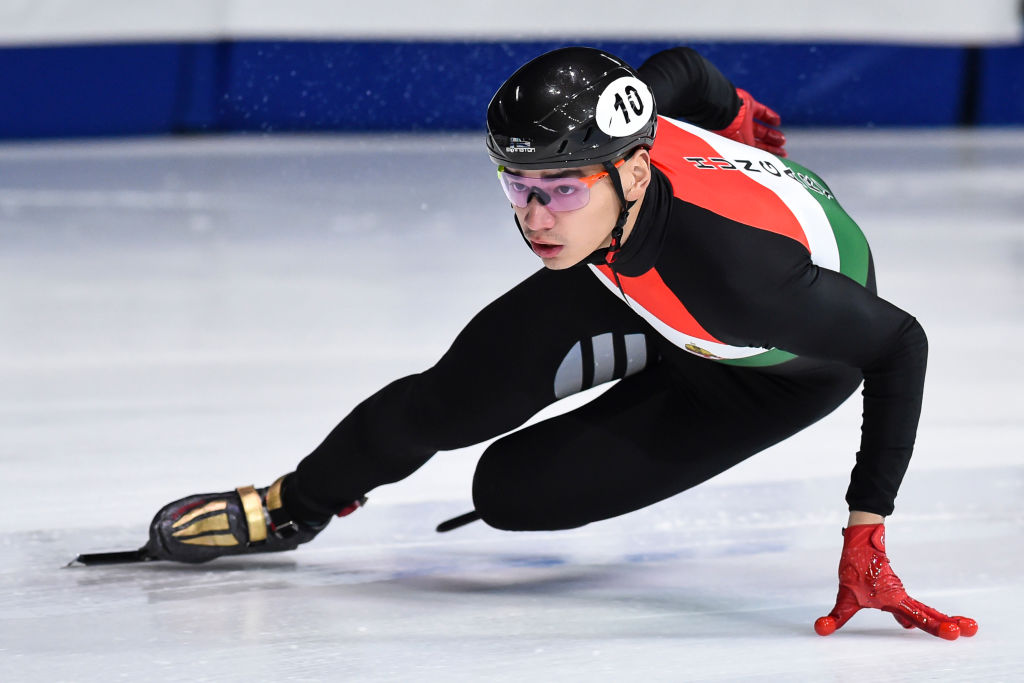
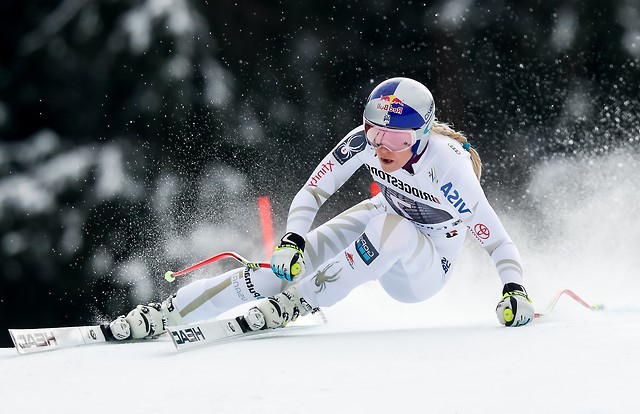
The other difference between skis and skates: – it’s just that skis bend and scribe arcs on the ground and are generally used on slopes not flat lakes. Skating actions are fundamental for a skier’s development because they involve independent leg action where only one leg at a time is really used. Although skiers can stand on two feet the body is oriented specifically on one hip joint at a time (when turning) and has to function as if standing on one leg. Skating exercises such as skating step turns are helpful in developing basic skills. Skating turns use diverging skis (opposite from snowplough) and incremental stepping of the centre of mass inward toward the turn centre. This is ideally the first sort of turning that any complete beginner should experience – on flat terrain.
Combining Snowplough with Dynamics
Dynamics is explained in terms of the mechanics of accelerations. (F=mA Newton’s 2nd Law). In skiing this means you move your centre of mass (either falling or with a push) in the direction you want to turn. You do not transfer your weight to the outside ski as is incorrectly taught in ski schools.
In the Snowplough using dynamics requires the adductors of both legs to be engaged and now the “deflection” is carried out by moving the Centre of Mass (CoM) across the skis in the direction of turning. The displacement of the CoM affects the geometry of both skis with respect to the slope (one goes flatter and the other more on edge) and that’s where the deflection comes from.
On steeper terrain the downhill ski (inside ski of the turn) takes the weight of the body and is used as a brake – pivoting slowly into the turn – until half way through the weight shifts by itself to the outside ski which is now able to take over the continued braking effect.
Basic Dynamics (skis parallel)
- Skis must be travelling forward – like a bicycle
- This is mainly about using the outside leg (start of new turn) to push the centre of mass into the centre of the new turn – for the whole duration of the turn
- There is no “balance” when skiing – dynamics is the physics of disequilibrium
- You are looking for stability from organised accelerations (ski technology!)
- Notice in the photos below the outside leg is essentially straight in a skating action (flexion for absorption and other purposes is primarily at the hip joint)
- The centre of mass goes down toward the snow – and to complete the turn it comes back up – like a motorbike in a turn
- There is no “Centrifugal Force” acting on the skier – only a deflection inward away from a straight line. This deflection is used to lift the skier up at the end of the turn – which involves “finishing” the turn – I.E. turning almost back up the hill.
- Remain square to the skis (follow the skis around the turn with your body) until you are really comfortable with movement of the centre of mass and clearly aware of moving it.
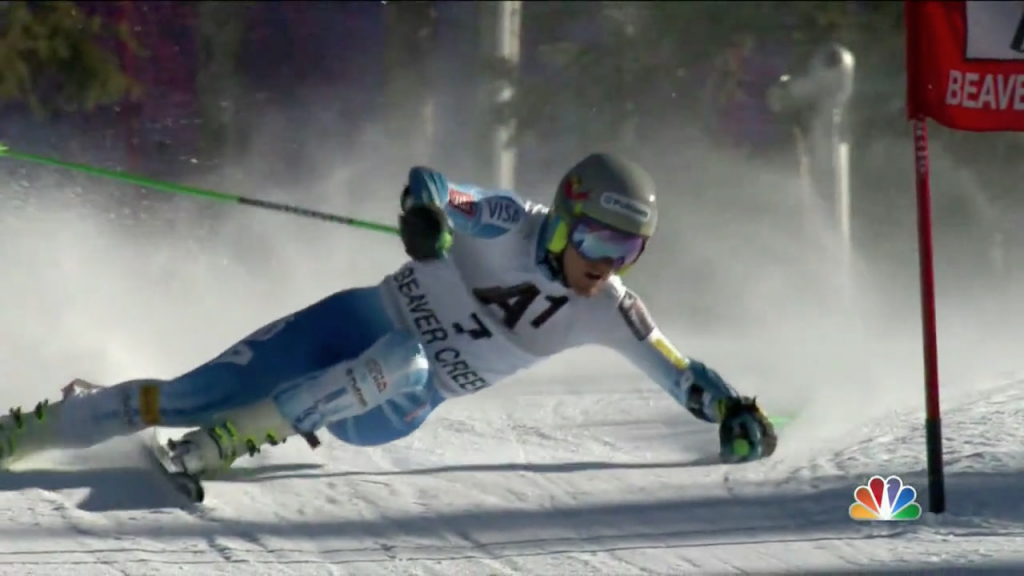
Alexa, Lottie, Vivi, Suzi
- Pivot
- Combining Dynamics and Pivot
Pivot (Skis sliding Sideways)
Pivoting is derived from the skis sliding sideways and can be developed from side slipping (It’s a braking form of turning). With a “pure pivot” as an exercise there is no forward travelling of the ski across the hill. Support for the centre of mass is now provided by support from a downhill pole plant. This is the real reason why we have ski poles! There is a full dedicated explanation of pivoting at the following link: “PIVOT“
Combining Dynamics and Pivot
- Dynamics depends of forward motion of the skis and lateral falling/pushing of the centre of mass
- Pivot depends on lateral motion of the skis – but always with the centre of mass being driven inward (toward the turn centre) modulated by the support of a pole plant
- The two can be combined – when there is both forward and lateral motion – making overall control of trajectory and speed totally under control of the skier
- In all cases there must be active adductor muscle use – and the feet must be “everted” i.e. turned outward inside the ski boots – diverging sightly (skating stance)
- The essential element to take from combining pivot and dynamics is to execute the turn transition from the uphill edge of the uphill ski – noting that the ski enters the new turn more easily than when on its inside edge and this also prevents stemming (and body rotation)
- Additionally with the transition between the two turns being made from the uphill edge it’s easy to switch into a very tight pivot when desired
Look at the skis in the two images below. The top image is with skis carving – the bottom image skis pivoting
